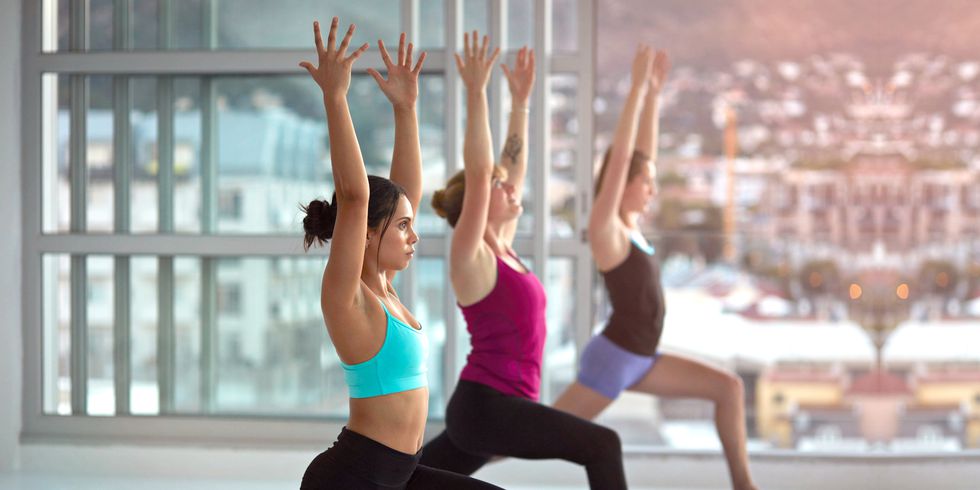By: Dr. Rita Khanna
(36 years experience in teaching yoga)
YOGA FOR KNEES

Knee pain is a nagging malady, which can immobilize a person thus making one helpless. Knee pain may vary from mild to severe, depending on the cause of the pain. Severe knee pain can be debilitating, as flexibility of the knees is vital to our mobility. The knees work almost like shock absorbers and along with the surrounding muscles, it has to sustain and support your weight. Yoga is one of the best ways to deal with chronic knee pain. Practiced with care, yoga postures can contribute to the long-term health of your knees by strengthening your quadriceps, opening your stiff hips and teaching your body improved alignment and movement patterns that transfer into your everyday activities.
OUR KNEE
The knee is made up of four bones. The femur (the thighbone) is the large bone in your thigh and is attached by ligaments and a capsule to your tibia (the shinbone). Just below and next to the tibia is the fibula, which runs parallel to the tibia in the leg. The patella (the kneecap) rides on the knee joint as the knee bends. A membrane called a synovial sac protects the joint and secretes the synovial fluid, which acts as a lubricant and provides nourishment to the articular cartilage & lines the joint. Other tissues that make up the knee joint include cartilage, muscles, tendons and ligaments.
Two crescent shaped pads of cartilage, each called a meniscus, sit between the shinbone and the thighbone and act as cushions between the bones and shock absorbers during movement. It helps to protect the joint and allows the bones to slide freely on each other. Two sets of ligaments—the cruciates and the collaterals—strap all four bones in place. The cruciates crisscross below the kneecap; the collaterals run alongside the outside of the kneecap. The leg’s substantial muscles help these ligaments keep the bones properly aligned. To function well, a person needs to have strong and flexible muscles. In addition, the meniscal cartilage, articular cartilage and ligaments must be smooth and strong.
YOGA & KNEE PAIN
Yoga is excellent for increasing strength and flexibility in knees. It improves circulation in the joints and flushes out toxins and other wastes. The improved circulation also implies improved nourishment for the surrounding joints & ligaments. As with any other discipline, it is necessary for you to consult a skilled and qualified practitioner before attempting any practice.
Following are very simple exercises that can be very helpful for rejuvenating knee joints.
PULLING UP KNEE CAPS IN SITTING POSTION
Sit with legs outstretched, place the palms on the floor just behind the buttocks, the back, neck & head should be straight, straighten the elbows, lean back slightly taking the support of the arms. Pull up your kneecaps by squeezing you thigh muscles gently. Relax. Do 10 times with the breath. Repeat it many times in a day. This helps support your knees.
VARIATIONS IN STANDING POSITIONS
• Stand tall, move your feet close enough to hold a ball or thick book between your thighs. Arms straight at your sides and shoulders relaxed. Squeeze your thighs gently without locking your knees. Hold it for some time. Repeat 10 times.
• Stand tall, turn your heels in & keep them together. Notice that this engages your thigh muscles, causing your kneecaps to rise. Repeat 10 times.
• Same as above, now instead of heals bring the toes in & keep them together. Repeat 10 times.
KNEE ROTATION
Sit with legs outstretched, bend the right knee & place the right arm under the right thigh and hold the right wrist with the left hand. Inhale, raise your right leg up to an angle of 90 degree & rotate your lower leg from the knee to ankle in a large circular movement, exhale on the downward moment. Try to straighten the leg at the top of the upward movement. The upper leg & trunk should be completely still. Repeat 10 times clockwise, 10 times anti clockwise. Repeat this process with the left leg.
CYCLING
Lie on your back with the legs outstretched, inhale, bend the right leg at the knee & bring it to the chest, then raise & straighten the leg upward toward the ceiling completely. Then exhale & lower the straight leg in a forward position. Do not keep it on the floor. Bend the knee & bring it back to the chest to complete cycle. Repeat 10 times clockwise, 10 times anti clockwise. Repeat this process with the left leg.
RECLINING LEG EXTENSION & ITS VARIATION
Lie on your back with your knees bent and your feet flat on the floor. Keeping your left foot on the floor, lift your right knee up toward your chest and then straighten your right leg upward toward the ceiling. Grab your right calf or thigh. Press your lower back into the floor. Flex your right foot, pointing your toes back toward your face, without locking your knee. Hold for 3 to 5 breaths. Repeat the pose on the other side. Do 3-5 times with each leg.
VARIATION
If you would like to move on to a deeper, more advanced stretch, raise your torso up and move your forehead toward your knee. Hold for 3 to 5 breaths. To release, gently lower your torso and your right foot to the floor.
CYCLING ON THE ABDOMEN
Lie face down on the abdomen, keep both the legs straight & slightly apart, raise the head up & rest the chin on the palms with the elbows on the floor. Now from behind, bend alternate legs towards the hips with natural breathing for some time. Then do the same with both the legs by bringing the feet together.
ARDHA SHALBHASANA
Lie on your stomach with your forehead or chin on the floor, place your palms & forearms under your shoulders, legs together. Bend your right knee from behind towards the right buttock. Pressing down with the left forearm take your right arm backward & hold the right foot in a way that you curl your fingers over the tip of your toes & your elbow facing up toward the ceiling. The base of your palm should be pressing the top of the foot. Now press your foot toward the buttock; after a while, if you have the flexibility, take the foot slightly off to the side and press it toward the floor. Be sure to keep your knee in line with your hip. Don’t push your foot too hard if it hurts your knee. Square your shoulders with the front of the mat and don’t collapse into your left shoulder. Instead, press down with your elbow to lift your chest. Repeat on the left side. Repeat 3 to 5 times on each side.
ADHOMUKHA SHAVASNA
Come onto the floor on all fours. Curl your toes under. Spread your fingers wide apart. Keep your hands as wide as your shoulders and feet as wide as your hip. While exhaling, lift your knees away from the floor forming a nice V shape with your legs. At first, keep the knees slightly bent and the heels lifted away from the floor. Slowly & consciously, stretch your legs & arms by raising your hips and tailbone up towards the ceiling. Push the heels downwards into the floor. Drop your head between the arms. Bring the chin closer to the chest to relax the back of the neck. Stay in this position for some time with natural breathing & then come back. To release, bend your knees and return to the starting position.
The best way to prevent a knee problem is to maintain a healthy weight and improve the flexibility and conditioning of the knee’s stabilizing muscles so that the joint is less vulnerable.



